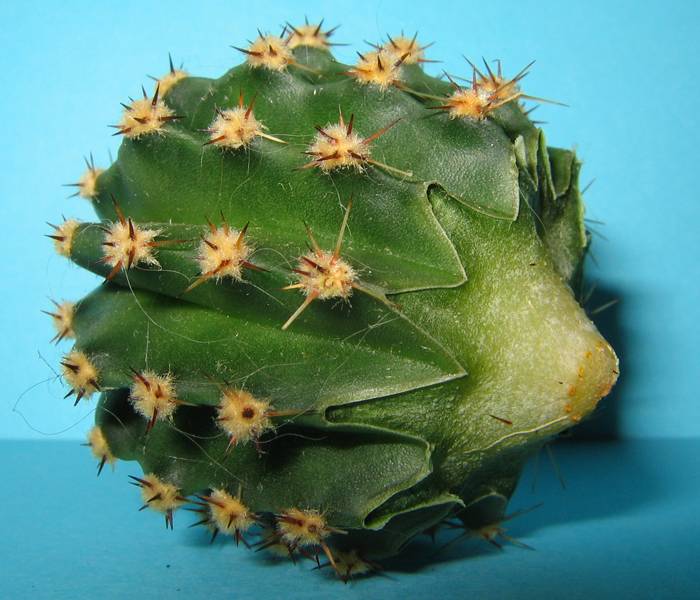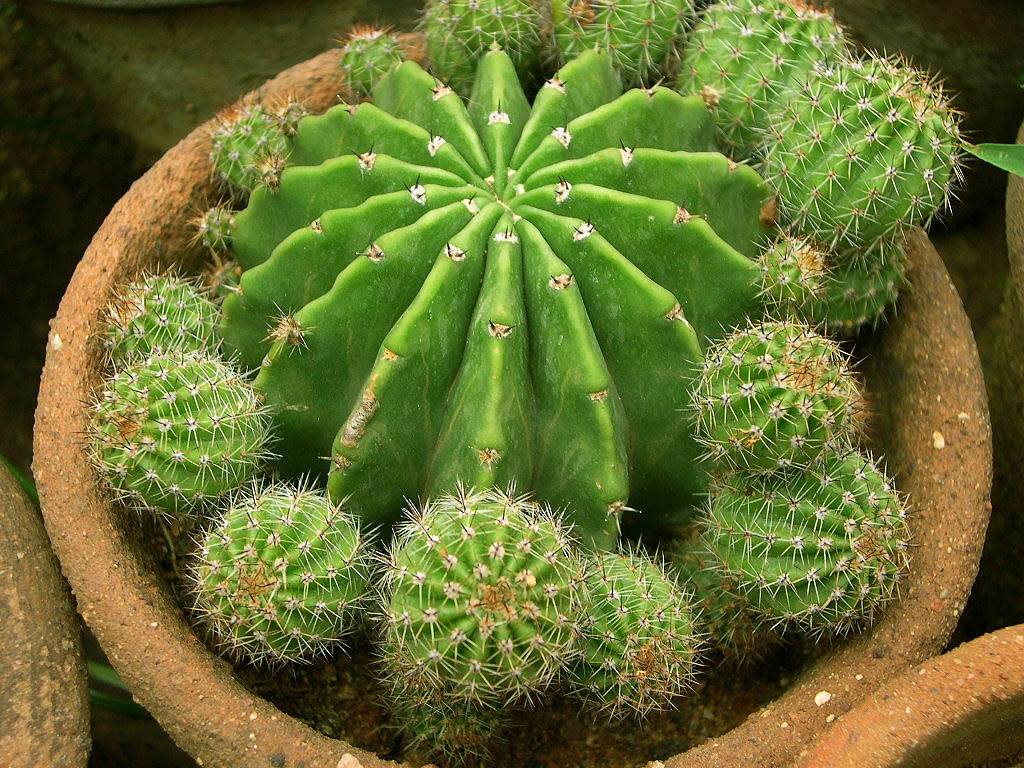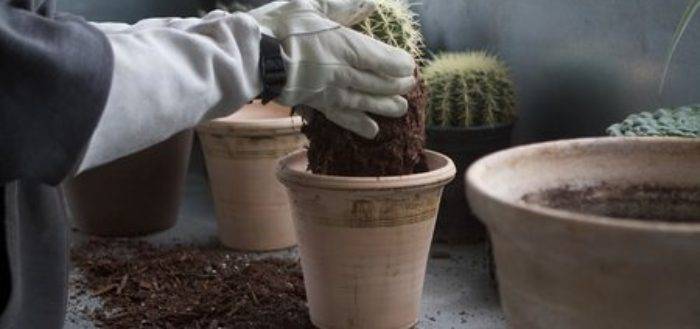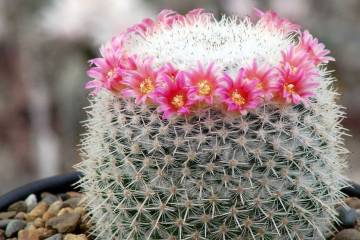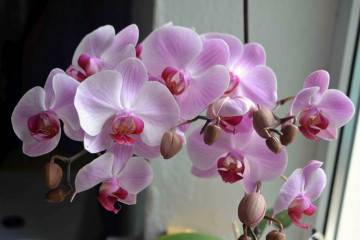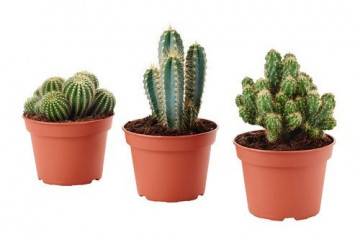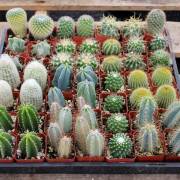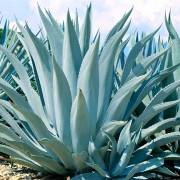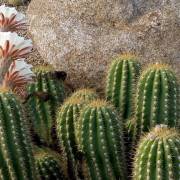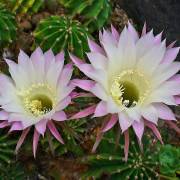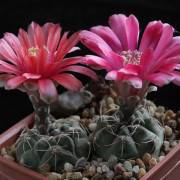How to plant a cactus: examples at home
Content:
Cacti are hardy plants. They can easily tolerate drought and do not need frequent replanting. But, like other plants, they need proper care and suitable soil.
How to plant a cactus: the choice of soil and container for planting
Soil for cacti can be made at home using components such as:
- sod soil;
- garden or forest land;
- humus;
- river sand;
- brick chips;
- charcoal;
- pebbles, gravel;
- zeolite (processed clay).
In order not to waste time preparing the soil before planting a cactus, specialized stores provide the opportunity to purchase a ready-made soil mixture, which includes all the necessary components:
- high-moor peat (product of decomposition of dead parts of herbaceous, deciduous and coniferous plants, as well as moss);
- low-lying peat (a mixture of the remains of rotted plants and animals, which includes many nutrients);
- humus;
- leafy soil (light, loose soil is obtained as a result of rotting of fallen leaves);
- coarse river sand;
- gravel or fine crushed stone;
- charcoal and broken brick mixed in equal proportions;
- expanded clay (used as drainage);
- vermiculite (absorbs excess moisture).
In no case should be added to the soil, in order to avoid the death of the plant:
- bird droppings;
- manure;
- sawdust.
The choice of a pot must be approached no less responsibly and pay attention to:
- the material from which the container is made (for cacti, anything except metal is suitable);
- the size of the pot (it is chosen 2 cm larger than the previous one);
- the shape of the container.
To choose the right container, you need to carefully remove the cactus from the previous pot, spread the roots and carefully examine the root system for damage or pests. If the roots are short and thin, then a wide and shallow pot is suitable for the plant. If the roots are long and have a pronounced stem, then the capacity should be deep and not wide.
How to grow a cactus from seeds at home
It is best to purchase soil for growing seeds in a specialized store, since all the necessary nutrients will already be present in it. It is imperative to process the soil before planting by sending it to the oven for 5-10 minutes at 100-120 degrees. Seeds also require disinfection in a manganese solution for 9-10 hours before planting.
A small container with a transparent lid is suitable for planting seeds. Packaging from a cake or cookie will do just fine. From tools, a toothpick and tweezers will be enough.
After the preparatory procedures, you can start sowing. The container is filled with a 5 cm layer of earth. The soil should be watered with boiled water, avoiding overflow. Then the soil is leveled, shallow holes are made in it with a toothpick, the distance between which is 1.5-2 cm. The seeds are placed in the holes with tweezers, but they are not covered with earth.After sowing, close the container with a lid or cling film.
Before growing cacti from seeds, you need to study the rules for caring for crops:
- watering. After sowing the seeds, you need to monitor the moisture content of the soil and not let it dry out, but you should not overmoisten it, as the seeds will simply rot. For watering, it is best to use a spray bottle that evenly moistens the ground;
- temperature conditions. The most optimal temperature is + 23-25 degrees. At night, the pot can be moved to a cooler place;
- lighting. Cubs of cacti should receive full coverage, but should not be exposed to direct sunlight.
Sprouted "cactus" at the age of one month should be planted in separate pots (dive). Drainage should be poured on their bottom, and then filled with soil, leaving 2 cm to the edge of the container. The sprout is placed in a hole made in the middle of the pot. In the first year of plant life, it is advisable to carry out several picks. This promotes the development of a strong root system.
Growing a cactus from a baby
In addition to growing cacti from seeds, reproduction can be carried out with the help of children. Cubs develop on a cactus for about 2-3 weeks. Usually there are quite a lot of them, so the question arises of how to plant a cactus overgrown with children.
You need to cut them off after they begin to flake off from the main stem. The baby is separated with a sharp knife, after which the cut site is treated with a weak solution of manganese. Before planting an outgrowth of a cactus without roots in the soil, it is given time to dry out (about a week) in order to avoid rotting on the "wound".
A small clay pot is suitable for planting. Before you plant the cactus babies in pots, you need to carefully treat them with a manganese solution. First of all, drainage is placed at the bottom of the container, and then the soil. The substrate is first moistened, and then the baby is placed in it with a dried cut down. The process does not need to be covered with soil, but its wobbling is also unacceptable. From above, you can fill the earth with small stones. With the correct procedures, the roots will appear in about a week. Further care is carried out in the same way as for adult plants.
Cactus transplant
To transplant a cactus, proceed as follows:
- the plant is carefully removed from the pot and the soil is shaken off it;
- carefully examine the root system, remove damaged roots and check for parasites;
- in the presence of damaged areas, they are covered with crushed activated carbon;
- the roots are dried before planting;
- drainage is placed on the bottom of the new pot and a small amount of soil is poured, then the roots are carefully laid and covered with soil. After the plant is watered, but not waterlogged.
Decorative compositions using cacti
Some people prefer to create a composition of several types of succulents, planting them in glass vases or other containers. For cultivation in such a "aquarium", it is customary to choose a theme:
- Desert. Open glass containers are selected. For the soil, you can use colored sand, fine river sand, or a mixture of sand and pebbles. Stones and ceramic chips are used as decoration.
- Forest.Plants such as ferns, small cacti, ivy, and ficuses are suitable for this composition. Sheet soil and peat with the addition of sand are used as soil.
- The mountains. For this composition, plants are selected whose homeland is the mountainous area: succulents, ivy, Saintpaulia.
How to plant cacti and other plants in glass containers? For this you need:
- prepare the container and put on gloves;
- carefully remove the plant from the pot and rinse its roots with warm water;
- pour sand 1 cm thick on the bottom of the container, spread expanded clay with activated carbon and other fillers in the center;
- succulents, cacti and other plants are placed in a vase, depending on the chosen composition. The gaps between them are covered with earth, sand, gravel or rubble. In this case, care must be taken that the leaves do not touch the walls of the container.
Plants in a glass container also need to be looked after, observing the following recommendations:
- lighting. It is not recommended to place the vase in direct sunlight, near batteries and other heating devices;
- temperature. The optimum temperature for growth is + 22-28 degrees;
- watering. It is carried out no more than 1-2 times a week, guided by the degree of drying of the soil. The soil should be saturated with water, but at the same time, moisture should not accumulate.
Growing a Decembrist
Such a beautiful flower as the Decembrist also belongs to cactus. It blooms, as a rule, in November-December, hence the name. How it is recommended to plant a Decembrist:
- it requires a low pot with a large diameter due to its extensive root system. The soil can be mixed by yourself or purchased from a specialty store;
- transplanting is carried out in the spring by transferring the flower into a larger pot;
- further care is very simple: the flower is watered with warm water, the room temperature is maintained at 20-25 degrees. It is not recommended to expose the flower pot in direct sunlight.
How does a cactus grow
The growth of a cactus directly depends on the variety and conditions of the green pet. In general, all cacti are considered slow growing plants. Some of the representatives of this species can grow by only 3 cm in 15 years. If the cactus receives all the necessary components for growth, it can add 1 cm per year.
If for a long period of time the cactus does not grow in height, it is worth revising the conditions for keeping the cactus. So, for example, if a pet has not risen a centimeter in 3-5 years, you should change the soil to the appropriate one, rearrange the plant to the sun or vice versa, remove it from direct sunlight, etc.
Subject to the simple rules regarding the cultivation of cacti, this plant will delight with its appearance for a long time.

